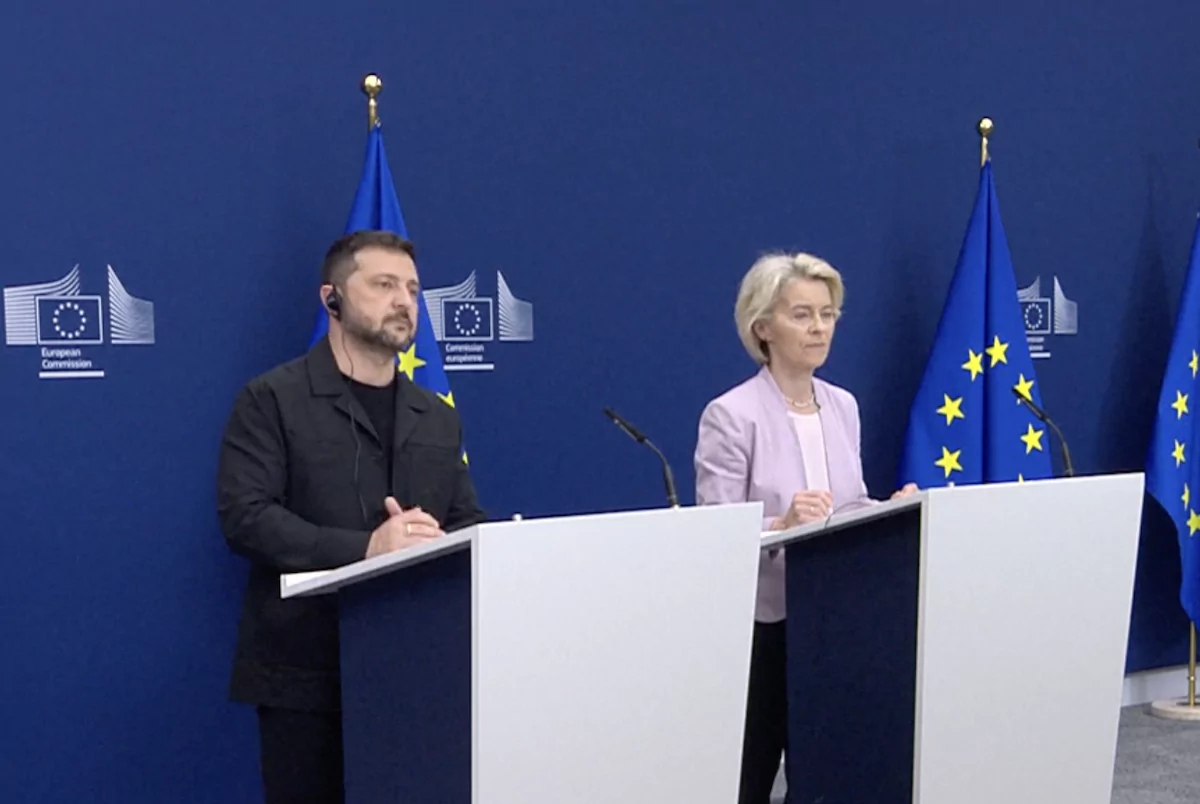European leaders meeting at the White House on Monday presented a united stance on Ukraine’s security, signalling that the war is a defining issue for the entire continent. While praising US President Donald Trump’s commitment to security guarantees, the talks left open the possibility of a ceasefire as part of a broader peace process.
The leaders of France, Germany, Finland, Italy and the United Kingdom, alongside European Commission President Ursula von der Leyen and NATO Secretary General Mark Rutte, joined Ukrainian President Volodymyr Zelenskyy at the White House for discussions with President Trump. British Prime Minister Keir Starmer said after the meeting there was “real progress” and a “real sense of unity”, while von der Leyen stressed that all parties were working on “a lasting and durable peace.”
Praise tempered with caution
While European leaders applauded Trump for moving forward on security guarantees, they remained cautious over his shifting stance on peace talks. German Chancellor Friedrich Merz admitted that expectations had been “exceeded” but added that next steps were “more complicated.” He pointed to the possibility of a ceasefire, saying the “path is open now” but called for greater pressure on Russia to engage meaningfully. Trump, for his part, was noncommittal, suggesting a ceasefire would be welcome but was not a “dealbreaker.”
Towards a trilateral summit
French President Emmanuel Macron described the commitment to joint security guarantees as “the most important outcome” of the talks, and suggested that a bilateral meeting between Russian President Vladimir Putin and Zelenskyy could take place in the coming days. A larger trilateral summit including Trump is being discussed for “two to three weeks’ time.” Macron expressed doubt about Putin’s willingness to halt the war, a sentiment echoed by Merz, who said any such summit must be “well-prepared.”
Security guarantees under discussion
Leaders acknowledged that clarity is needed on the scope of security guarantees, including who will participate and how binding they will be. Merz underlined that the matter extends beyond Ukraine’s borders, warning: “This is not just about the territory of Ukraine. It’s about the political order of Europe.” NATO’s Mark Rutte ruled out Ukrainian membership for now but confirmed that “Article 5 kind of security guarantees” were being debated — a reference to the alliance’s collective defence pledge.
The road ahead
Details of US involvement are expected to be worked out in the coming days, offering Zelenskyy greater certainty over whether Ukrainians can be kept safe under a potential peace deal. For now, European leaders say the joint effort represents both progress and fragility: a united front in support of Ukraine, but one still overshadowed by the unpredictability of Russia’s next move.
Von der Leyen’s vision for Ukraine
In Brussels on 17th August, European Commission President Ursula von der Leyen set out a firm message of solidarity alongside President Zelenskyy. She said the EU would back Ukraine “for as long as it takes” to secure what she called a just and lasting peace. Ukraine, she argued, must become a “steel porcupine, undigestible for potential invaders”, with no restrictions on its armed forces or its ability to seek support from partners.
Von der Leyen outlined plans to step up Europe’s defence industry, pointing in particular to drones and industrial capacity, and confirmed that a new package of sanctions against Russia would be unveiled in September. She also restated the EU’s position that international borders cannot be changed by force. “Only Ukraine can choose its destiny,” she said, “but Ukraine can always count on Europe.”
Stay updated with Monaco Life: sign up for our free newsletter, catch our podcast on Spotify, and follow us across Facebook, Instagram, LinkedIn, and Tik Tok.
Photo: European Commission
